Abstract
The duration of pigeons' key pecks was studied in three experiments. Experiment I revealed that key pecks early in exposure to continuous reinforcement were of short duration, as were key pecks observed on an omission procedure in which pecks prevented food delivery. Key pecks later in exposure to continuous reinforcement, and those that occurred on positive automaintenance procedures, were of long duration. In Experiment II, pigeons were exposed to fixed-interval and fixed-ratio reinforcement schedules, and durations were recorded separately for each quarter of each interval or ratio. On fixed interval, durations were shorter in the first quarter of each interval than in subsequent quarters; on fixed ratio, durations were longer in the first quarter of the ratio than in subsequent quarters. These data parallel observations of concurrent operant responding and salivation in dogs. In Experiment III, pigeons were exposed to a discrete trial, differential-reinforcement-of-low-rate 6-sec schedule. Durations of responses in the first 2 sec of the trial were substantially shorter than those of responses that occurred later. The data from all three experiments support the view that the pigeon's “key peck” actually consists of two subclasses of peck, one reflexive and one operant.
Keywords: peck duration, continuous reinforcement, omission, fixed interval, fixed ratio, differential reinforcement of low rate, pigeon
Full text
PDF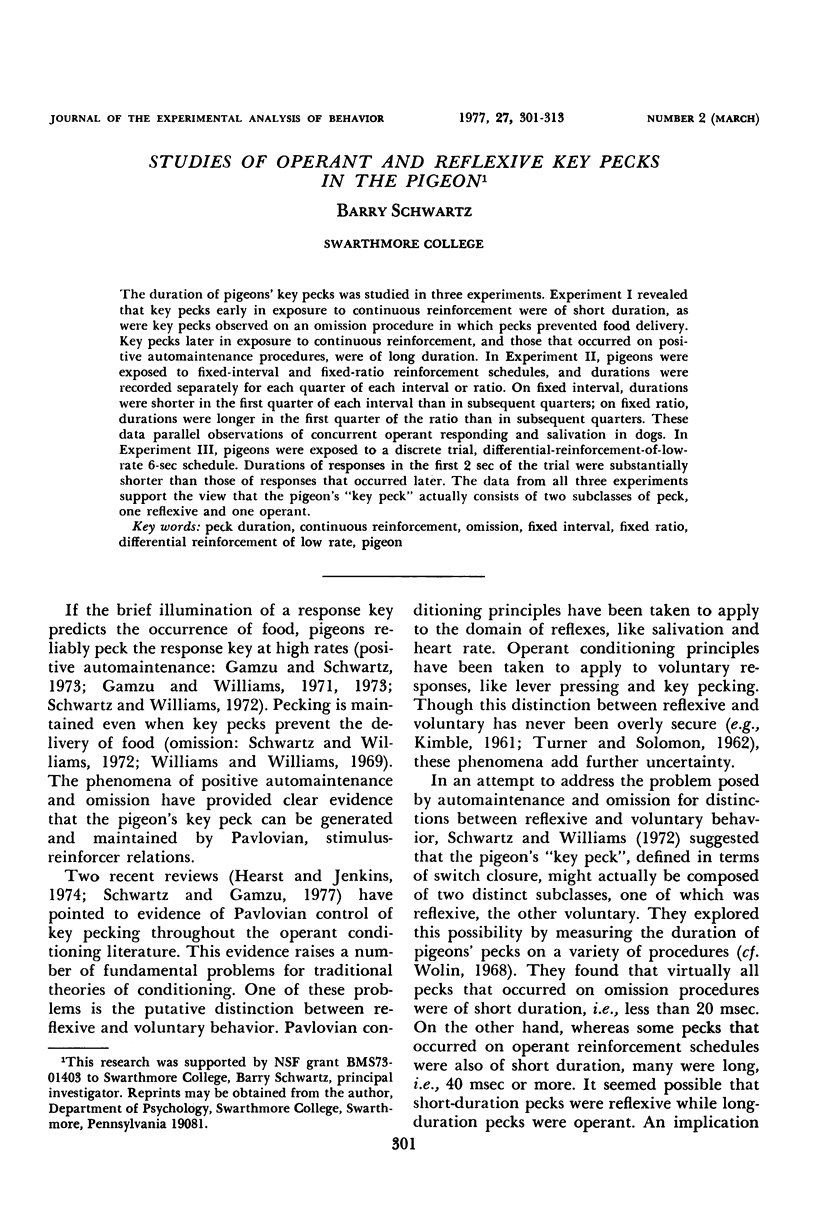
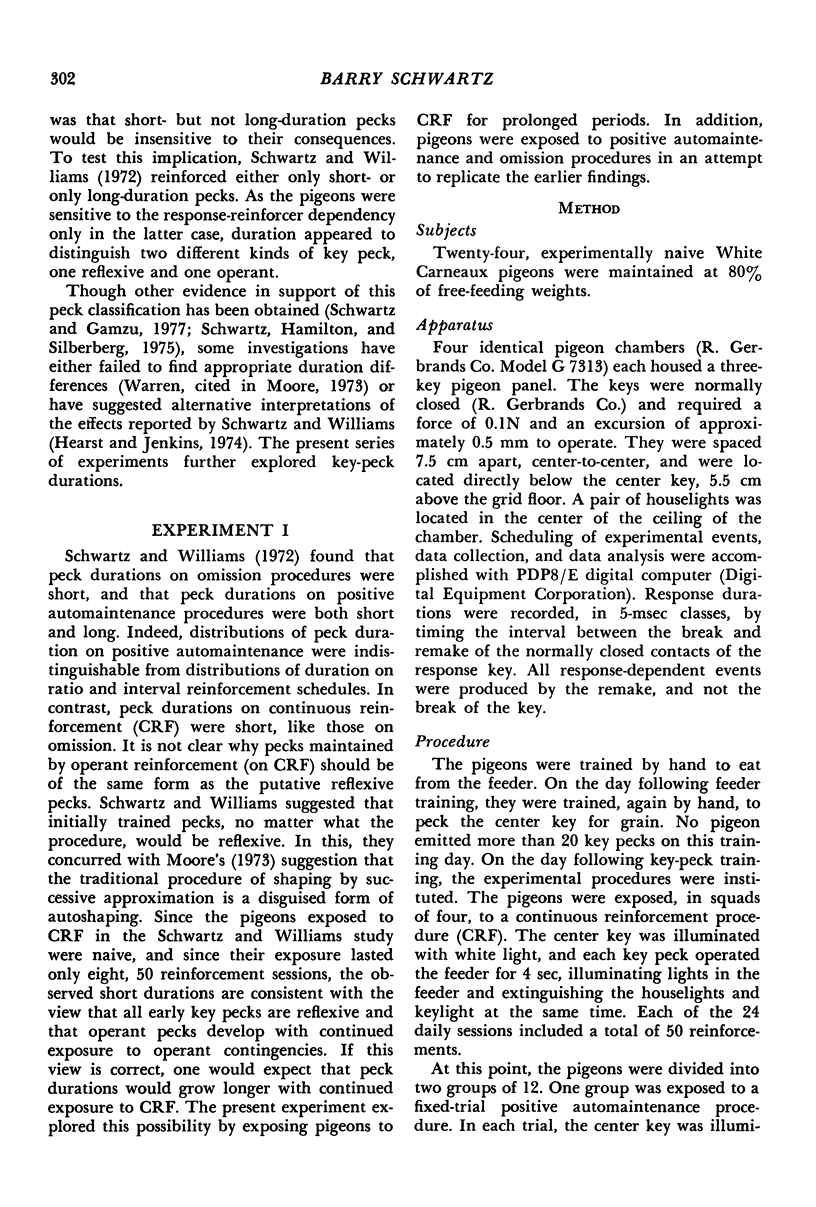
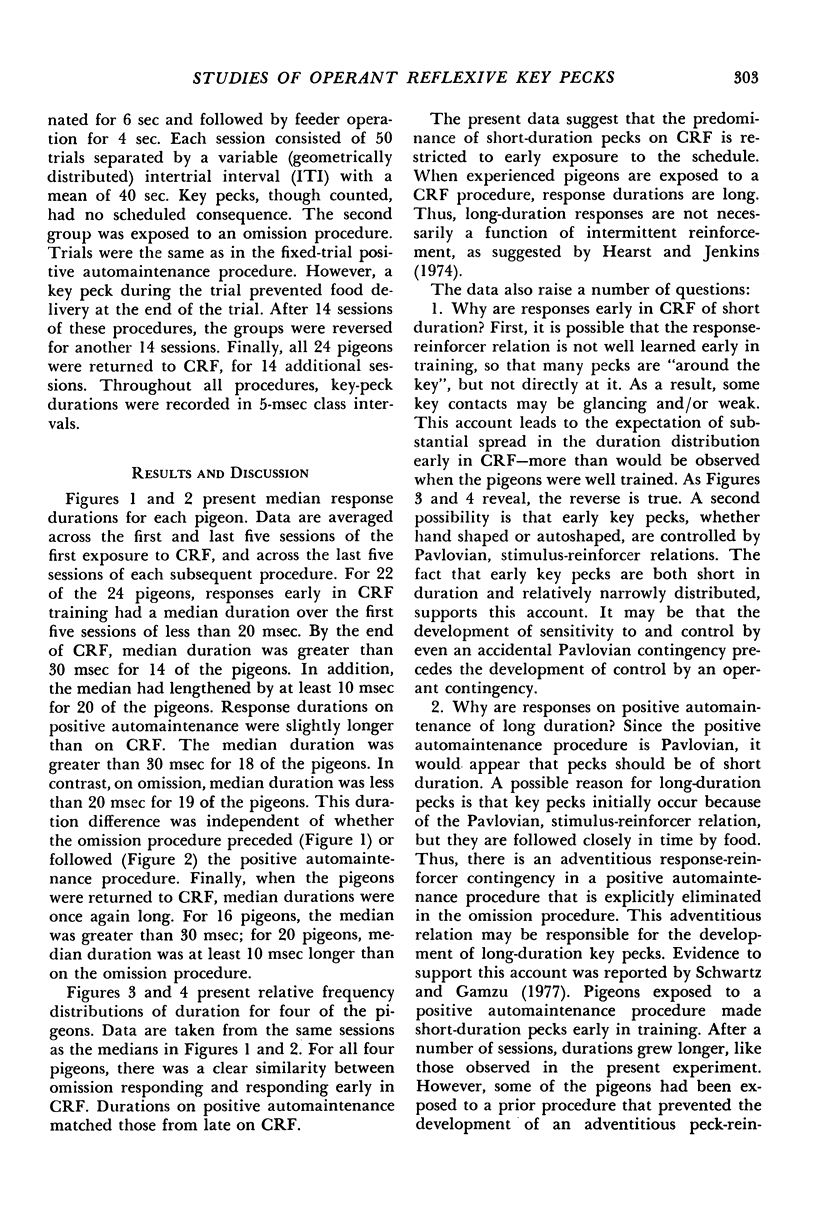
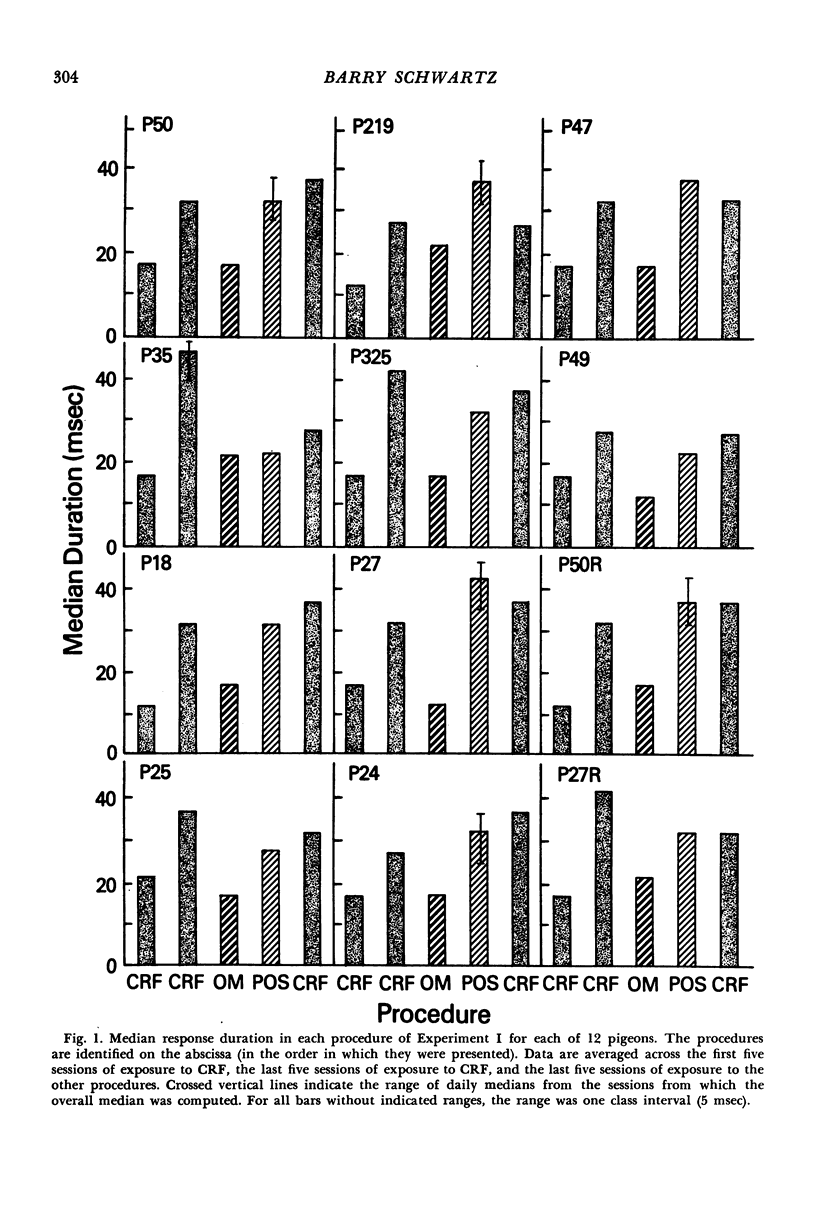
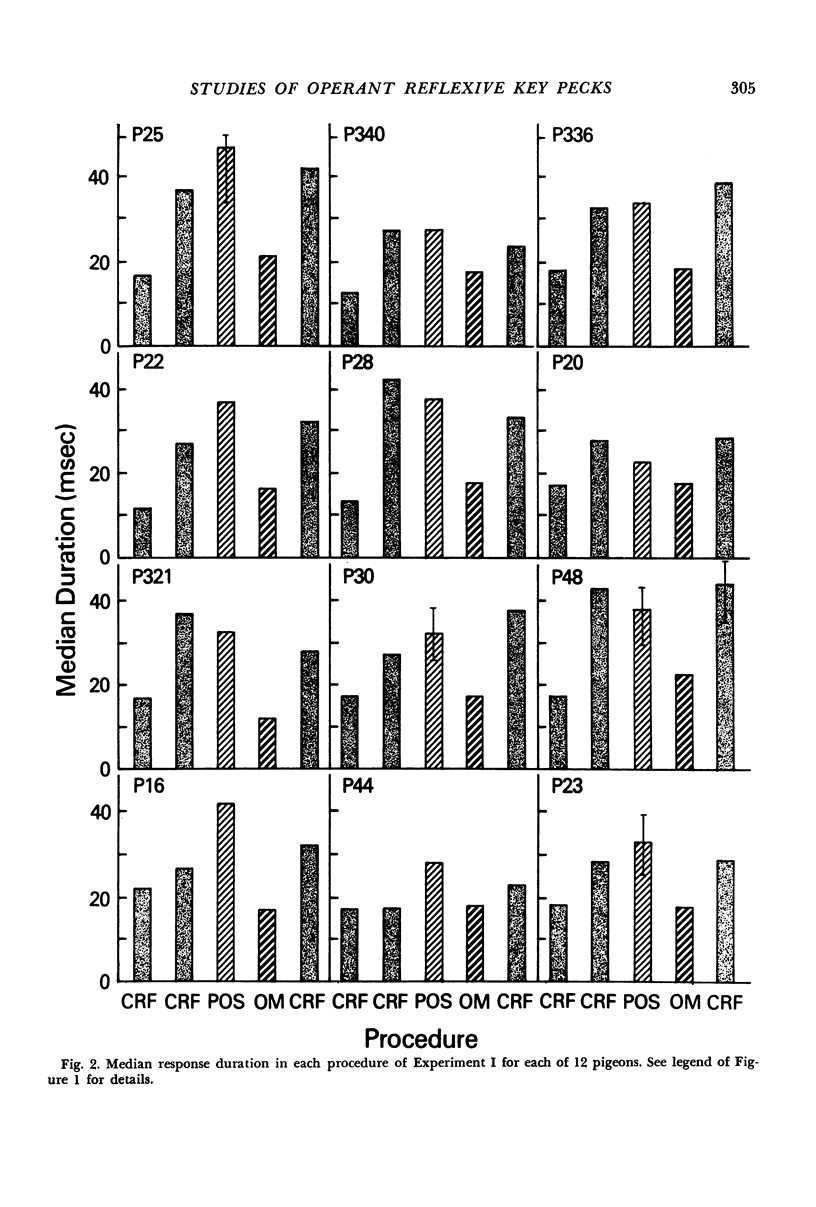
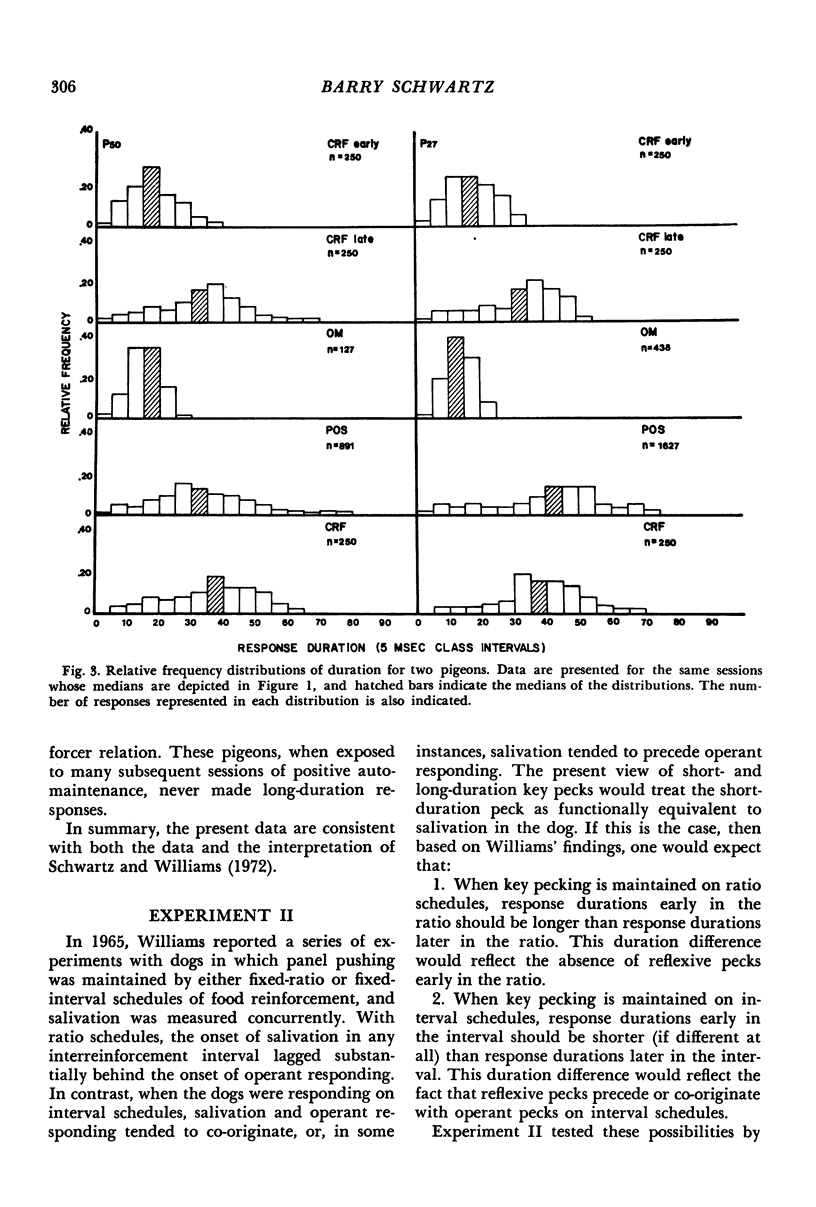
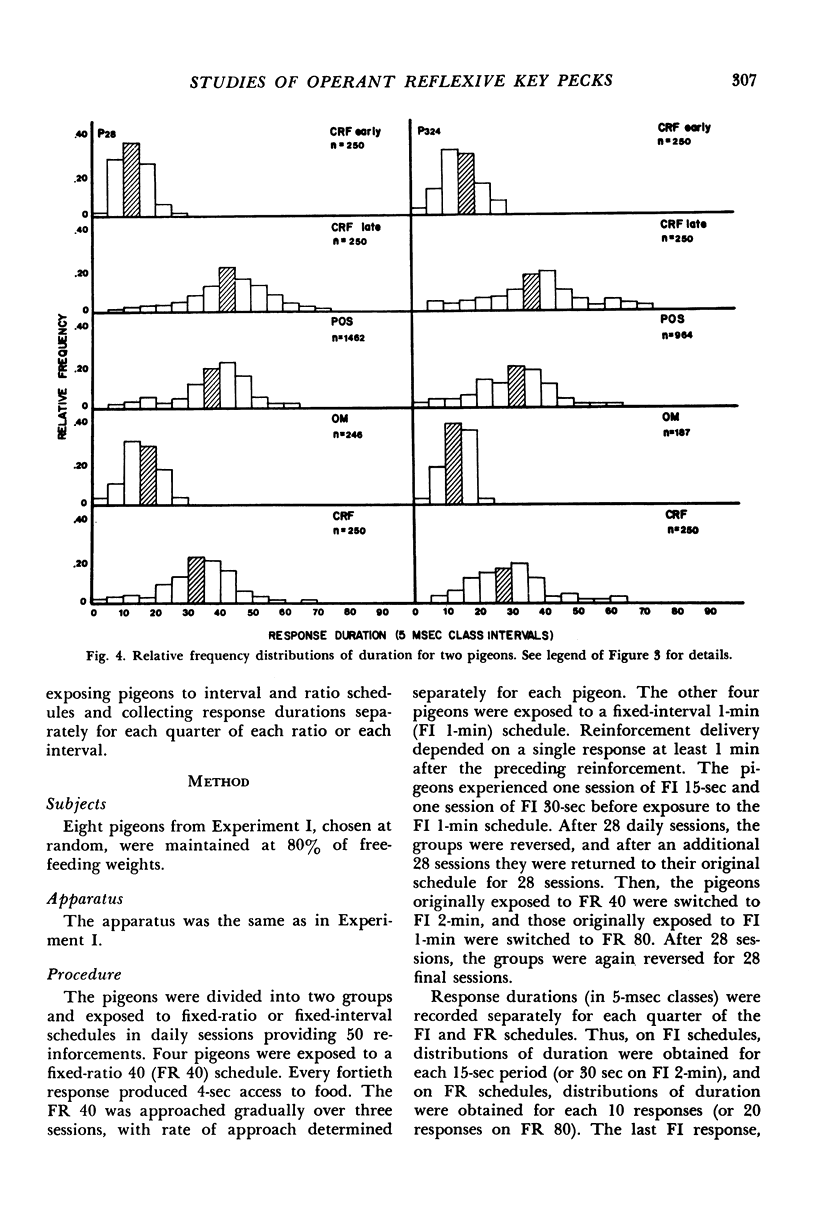
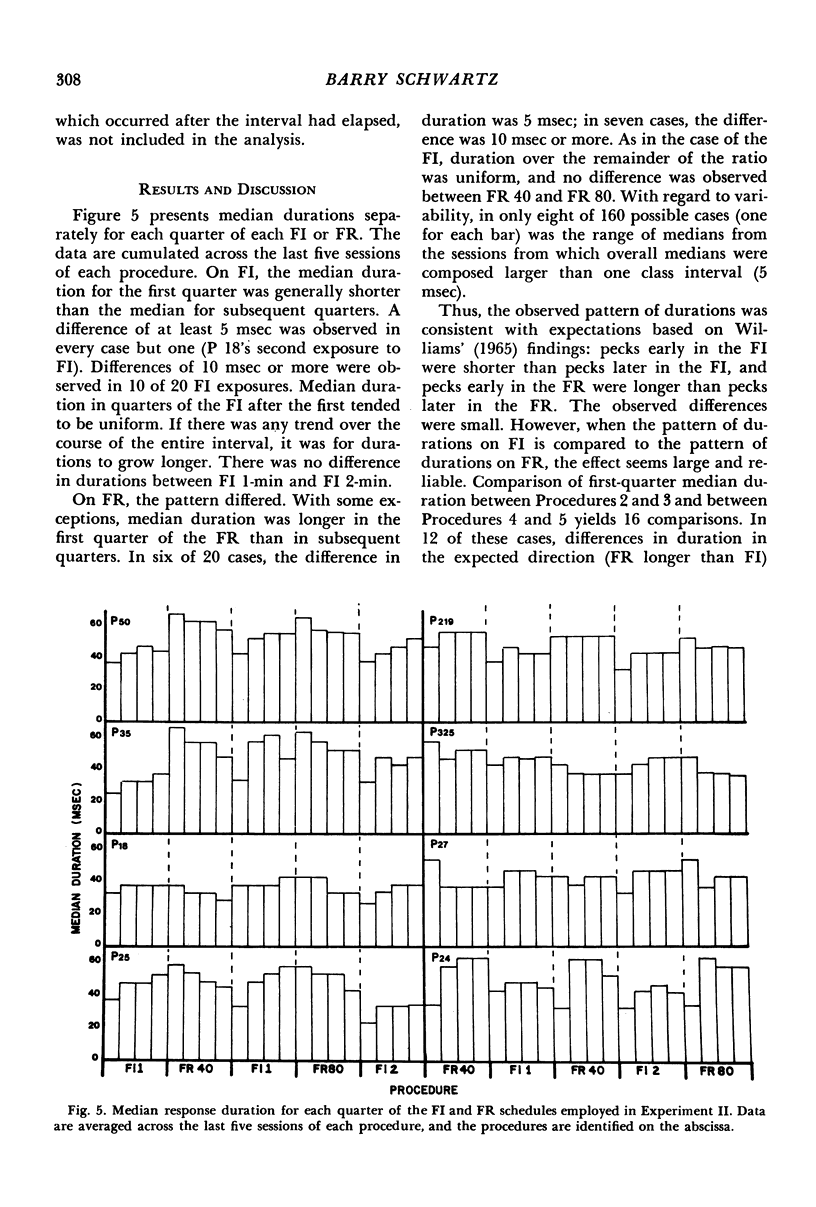
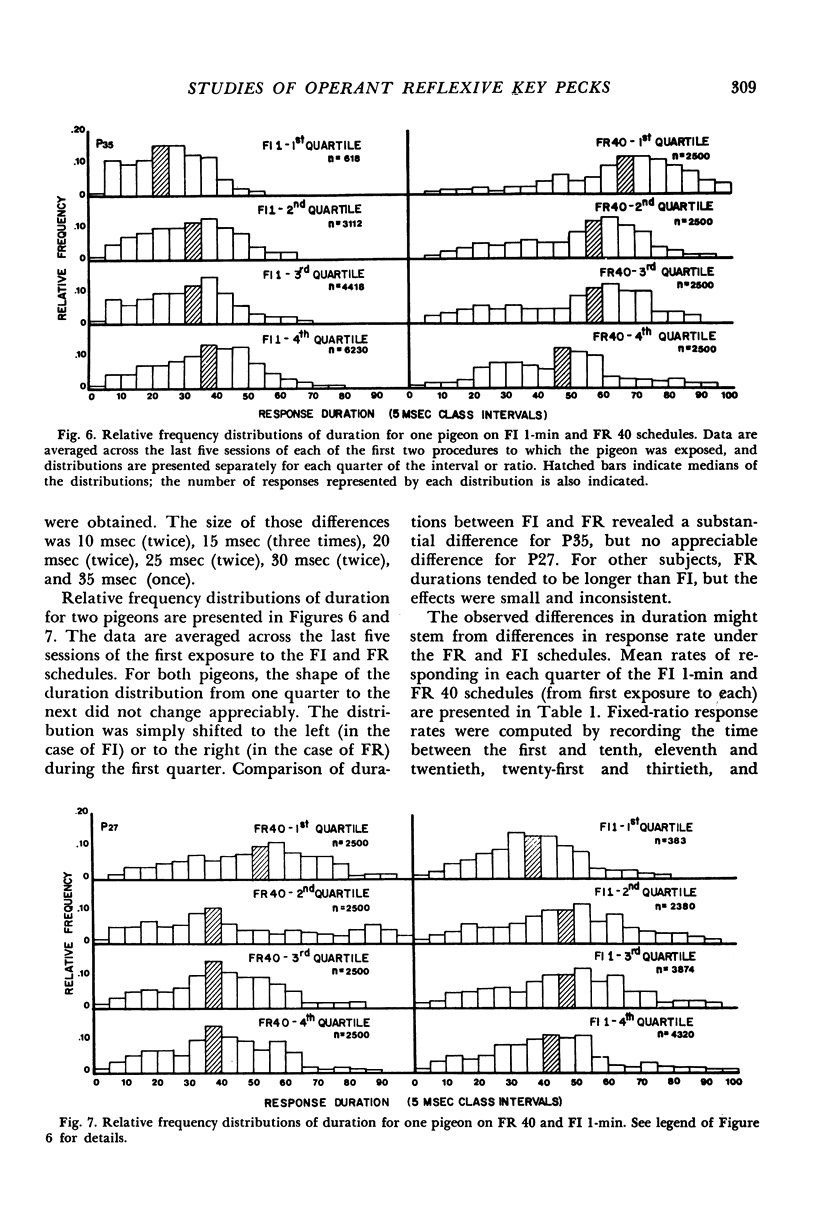
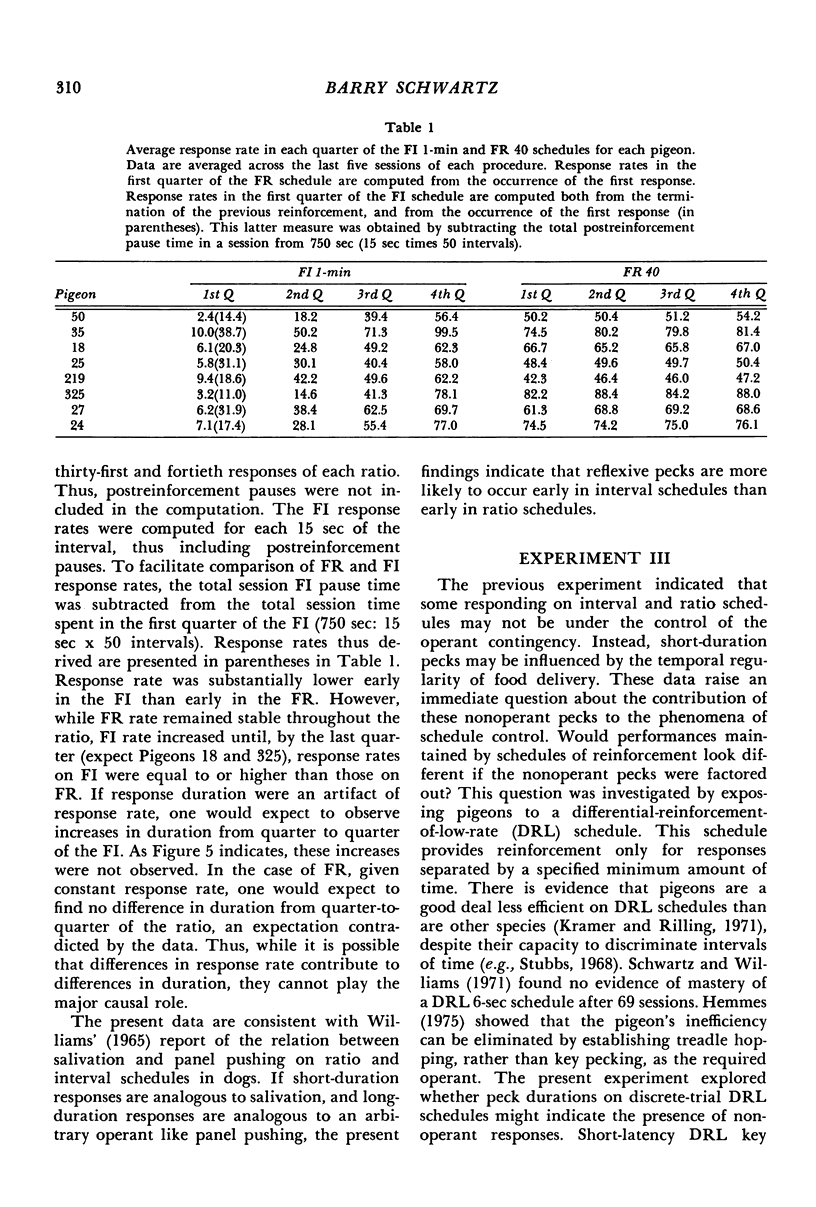
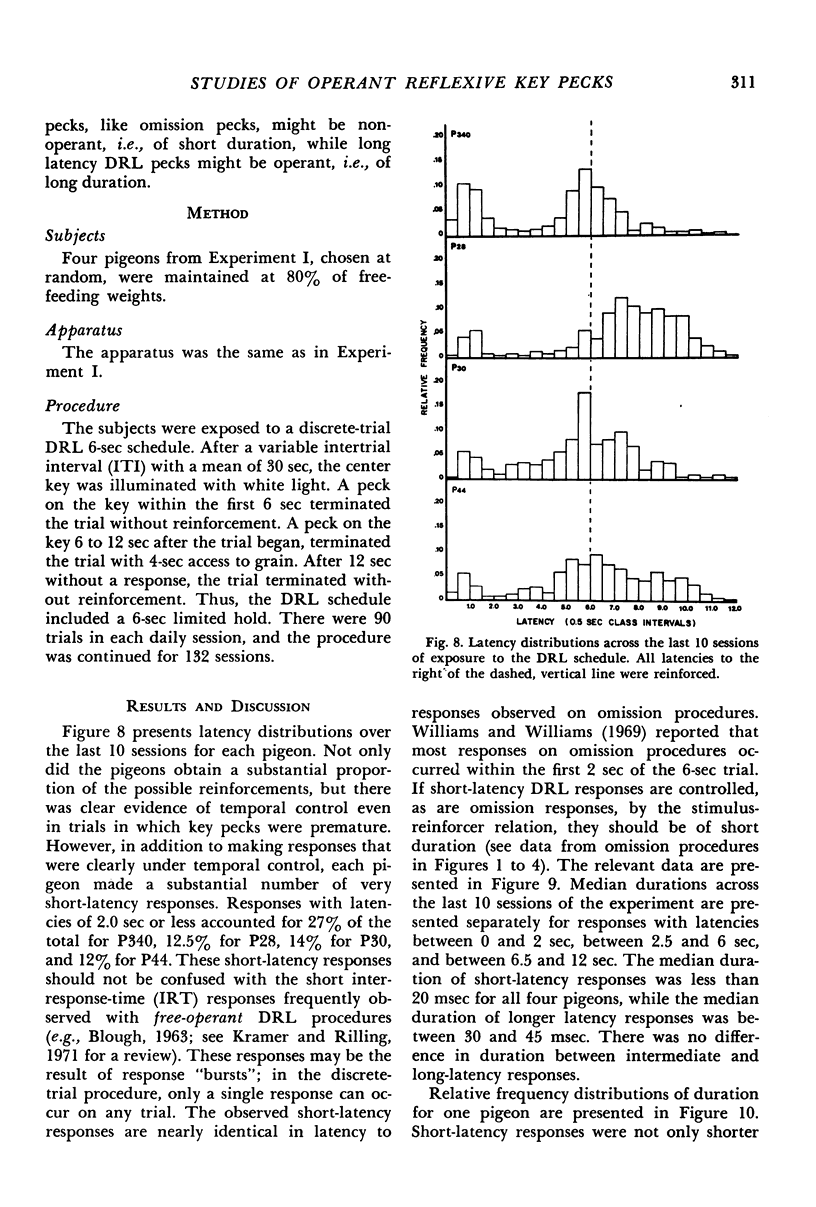
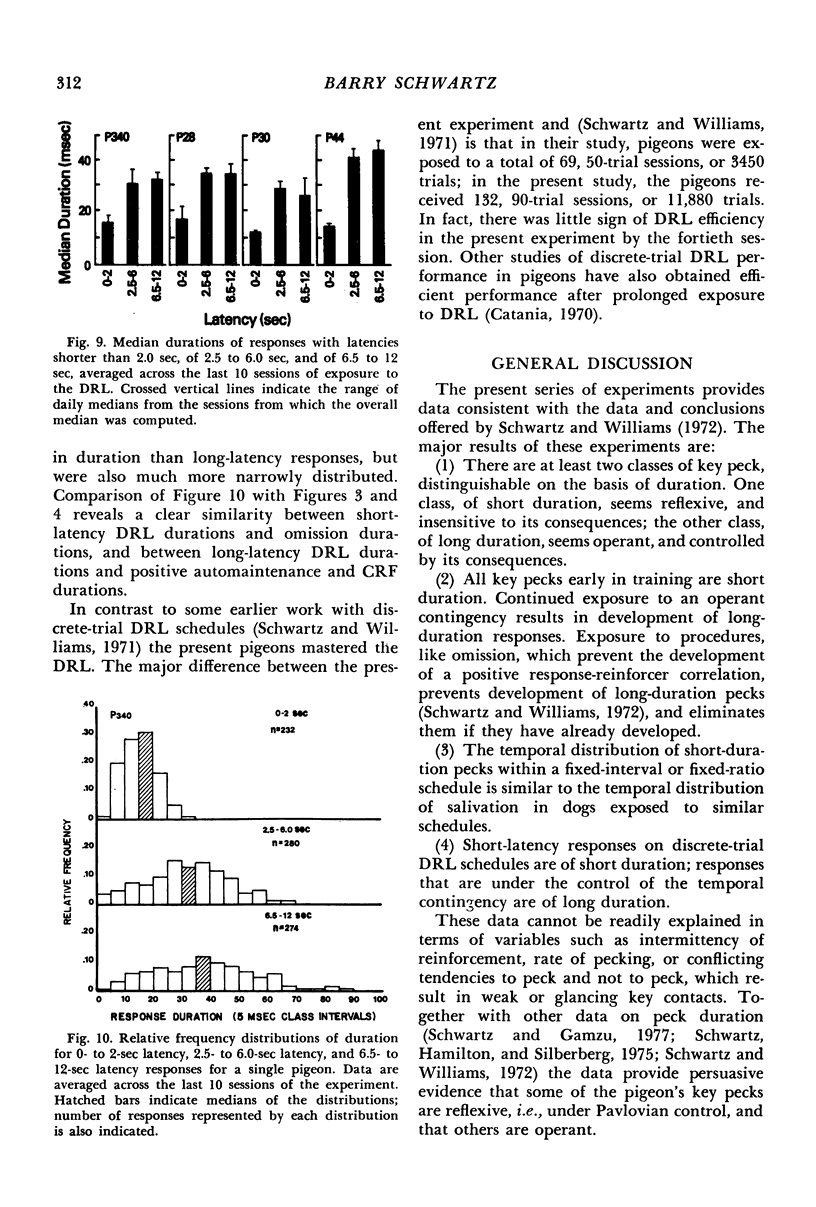

Selected References
These references are in PubMed. This may not be the complete list of references from this article.
- Blough D. S. Interresponse time as a function of continuous variables: a new method and some data. J Exp Anal Behav. 1963 Apr;6(2):237–246. doi: 10.1901/jeab.1963.6-237. [DOI] [PMC free article] [PubMed] [Google Scholar]
- Gamzu E. R., Williams D. R. Associative factors underlying the pigeon's key pecking in auto-shaping procedures. J Exp Anal Behav. 1973 Mar;19(2):225–232. doi: 10.1901/jeab.1973.19-225. [DOI] [PMC free article] [PubMed] [Google Scholar]
- Gamzu E., Schwartz B. The maintenance of key pecking by stimulus-contingent and response-independent food presentation. J Exp Anal Behav. 1973 Jan;19(1):65–72. doi: 10.1901/jeab.1973.19-65. [DOI] [PMC free article] [PubMed] [Google Scholar]
- Gamzu E., Williams D. R. Classical conditioning of a complex skeletal response. Science. 1971 Mar 5;171(3974):923–925. doi: 10.1126/science.171.3974.923. [DOI] [PubMed] [Google Scholar]
- Schwartz B., Hamilton B., Silberberg A. Behavioral contrast in the pigeon: a study of the duration of key pecking maintained on multiple schedules of reinforcement. J Exp Anal Behav. 1975 Sep;24(2):199–206. doi: 10.1901/jeab.1975.24-199. [DOI] [PMC free article] [PubMed] [Google Scholar]
- Schwartz B., Williams D. R. Discrete-trials spaced responding in the pigeon: the dependence of efficient performance on the availability of a stimulus for collateral pecking. J Exp Anal Behav. 1971 Sep;16(2):155–160. doi: 10.1901/jeab.1971.16-155. [DOI] [PMC free article] [PubMed] [Google Scholar]
- Schwartz B., Williams D. R. Two different kinds of key peck in the pigeon: some properties of responses maintained by negative and positive response-reinforcer contingencies. J Exp Anal Behav. 1972 Sep;18(2):201–216. doi: 10.1901/jeab.1972.18-201. [DOI] [PMC free article] [PubMed] [Google Scholar]
- Stubbs A. The discrimination of stimulus duration by pigeons. J Exp Anal Behav. 1968 May;11(3):223–238. doi: 10.1901/jeab.1968.11-223. [DOI] [PMC free article] [PubMed] [Google Scholar]
- Williams D. R., Williams H. Auto-maintenance in the pigeon: sustained pecking despite contingent non-reinforcement. J Exp Anal Behav. 1969 Jul;12(4):511–520. doi: 10.1901/jeab.1969.12-511. [DOI] [PMC free article] [PubMed] [Google Scholar]


